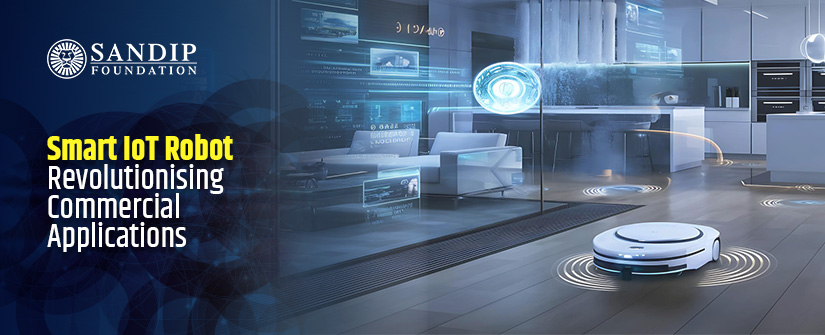The Internet of Things (IoT) and robotics in particular have seen tremendous technological advancements that have drastically changed a number of industries, including the hotel sector. With its increased efficiency, lower operating costs, and improved customer happiness, automation in restaurants has emerged as a key area of innovation. A number of issues are brought about by the heavy reliance on human waitstaff in traditional restaurant service, including high labour costs, inaccurate orders, lengthy wait times, and uneven service quality. There are many top computer engineering colleges in Nashik that offer cutting-edge programs in this field to provide trained professionals to the industry.
As social alienation and hygiene concerns have grown, especially in the post-pandemic age, automated food delivery systems have drawn a lot of interest as a potential substitute. route
navigation while utilising ultrasonic sensors to identify and steer clear of obstacles. Through a web or mobile application, restaurant employees may remotely operate and keep an eye on the robot’s movement, status, and battery levels thanks to the incorporation of IoT technology.
The hotel sector has seen major developments as a result of the quick development of robotics and the Internet of Things. Restaurant food delivery automation increases productivity, lowers labour expenses, and boosts patron happiness. In order to maximise restaurant operations, the idea of service robots has developed throughout time, incorporating real-time communication, intelligent navigation, and Internet of Things-driven management systems. Increasing labor expenses, human error, variable service quality, and the demand for contactless services—particularly in the post-pandemic era—are just a few of the many issues facing the restaurant sector.
By automating food delivery, the Internet of Things-based robot improves dining experiences. The robot receives a signal when a customer hits a call button at their table, and it uses infrared sensors to follow a predetermined route until it reaches the desired table. Once at the table, the customer uses a keyboard and LCD screen to choose their order, which is then wirelessly sent to the kitchen. An LCD panel displays the order to the kitchen staff, and a buzzer signals them to start preparing. When it encounters difficulties, the robot instantly stops and sends an IoT message to the hotel manager to fix the problem before continuing.
There can be a project which is an automated food ordering and delivery system using a robot, designed to enhance efficiency and customer experience in a hotel or restaurant setting. The process begins when a customer arrives at the table and presses a button placed there. This action signals the robot, which then moves towards the table to take the order. The robot is equipped with a keypad displaying various food items, allowing the customer to select their desired dishes. Once the selection is complete, the order is confirmed, and it is then transmitted wirelessly to the kitchen using an RF (Radio Frequency) receiver.
In the kitchen, an RF receiver captures the order details and displays them on an LCD screen. Simultaneously, a buzzer sounds to alert the kitchen staff that a new order has been received. The kitchen staff then reviews the order and begins preparing the food. Once the food is ready, they send a notification to the robot through an IoT-based communication system, which could be Wi-Fi or Bluetooth. Upon receiving the notification, the robot autonomously moves to the kitchen to pick up the order.
When the robot reaches the kitchen, the staff places the prepared food onto the robot’s tray or storage compartment. A confirmation is sent to the robot, which then navigates back to the customer’s table. The robot ensures smooth navigation using pre-programmed paths, sensors, to avoid obstacles and deliver the food efficiently. To confirm receipt, the customer can press a “Complete Order” button on the robot, signalling that the process is finished. Once confirmed, the robot returns to its standby position, ready for the next order. This entire system minimises human intervention, reducing the need for waiters, lowering labour costs, and enhancing overall hygiene.
The technology used in this system includes an interactive keypad or touchscreen for ordering, an RF communication module for order transmission, an IoT module for real-time updates, and a navigation system equipped with sensors for smooth movement. The kitchen is fitted with an LCD display and a buzzer to alert staff about new orders, ensuring efficiency in order processing.
This automated system offers several advantages, including increased accuracy in order placement and delivery, reduced wait times, and an improved customer experience. Additionally, it minimises human errors and enhances hygiene by reducing direct human contact with food. Future enhancements could include integrating a mobile app for order placement, voice recognition for hands-free ordering, AI-based navigation for better movement, and payment integration for seamless transactions. Pursuing B.Sc. in Artificial Intelligence and Machine Learning can help you build a bright future in this field as a qualified computer engineer.

